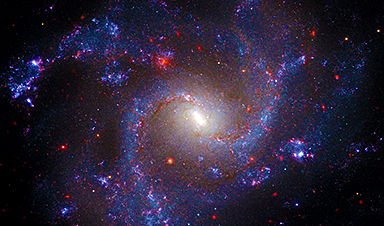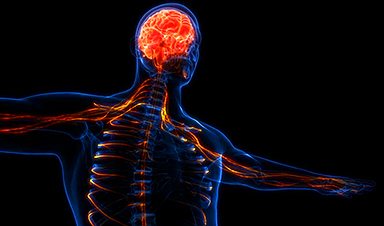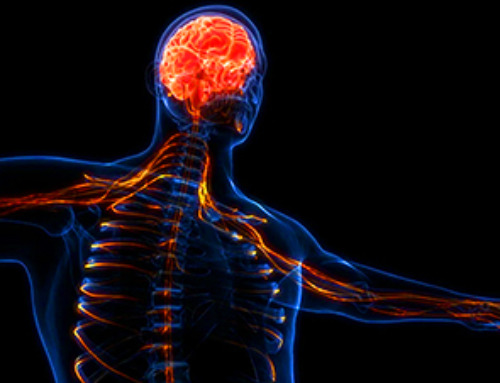In a study published in the journal Classical and Quantum Gravity, Dr. Richard Lieu, a physics professor at The University of Alabama in Huntsville (UAH), which is a part of The University of Alabama System, suggests that the universe was formed on the steps of multiple singularities rather than the Big Bang alone to explain the universe’s expansion.
The new model does not require dark matter or dark energy to explain the expansion of the cosmos or the formation of structures like galaxies.
The researcher’s work expands on an earlier model that hypothesized gravity could persist without mass.
This new paper proposes an improved version of the earlier model, which is also radically different. The new model can account for both structure formation and stability, and the key observational properties of the expansion of the universe at large, by enlisting density singularities in time that uniformly affect all space to replace conventional dark matter and dark energy.
Dr. Richard Lieu, Professor, The University of Alabama in Huntsville
Dr. Lieu added, “Sir Fred Hoyle opposed Big Bang cosmology and postulated a ‘steady state’ model of the universe in which matter and energy were constantly being created as the universe expands. But that hypothesis violates the law of mass-energy conservation. In the current theory, the conjecture is for matter and energy to appear and disappear in sudden bursts and, interestingly enough, there is no violation of conservation laws.”
He stated, “These singularities are unobservable because they occur rarely in time and are unresolvedly fast, and that could be the reason why dark matter and dark energy have not been found. The origin of these temporal singularities is unknown – safe to say that the same is true of the moment of the Big Bang itself.”
These singularities in space, instead of dark matter, generate “negative pressure,” a type of energy density similar to dark energy that has a repulsive gravitational impact, forcing the universe to expand at an accelerated rate.
“An example is the negative pressure exerted by a magnetic field along a field line. Einstein also postulated negative pressure in his 1917 paper on the Cosmological Constant. When positive mass-energy density is combined with negative pressure, there are some restrictions which ensure the mass-energy density remains positive with respect to any uniformly moving observer, so the negative density assumption is avoided in the new model,” Dr. Lieu noted.
The title of Lieu’s latest study, Are dark matter and dark energy omnipresent?, suggests the researcher’s ultimate conclusions.
He stated, “They are not omnipresent – meaning, not present at all times. They only appear in brief instances during which the matter and energy do fill the entire universe uniformly, apart from random spatial density variations which grow to form bound structures like galaxies. In between which they are not to be found anywhere. The only difference between this work and the standard model is that the temporal singularity occurred only once in the latter, but more than once in the former.”
Looking ahead, Lieu believes the next step in confirming his model of the universe will be observations made with earthbound instruments rather than something like the James Webb Space Telescope.
The researcher noted, “The best way to look for the proposed effect is actually to use a large ground-based telescope – like the Keck Observatory [Waimea, Hawaii], or the Isaac Newton Group of Telescopes in La Palma, Spain – to perform deep field observations, the data of which would be ‘sliced’ according to redshift. Given sufficient redshift (or, equivalently, time) resolution effected by the redshift slicing, one might just find that the Hubble diagram exhibits jumps in the redshift distance relation, which would be very revealing.”
Journal Reference:
Lieu, R. (2025) Are dark matter and dark energy omnipresent? Classical and Quantum Gravity. doi.org/10.1088/1361-6382/adbed1
News
Nerve Damage Can Disrupt Immunity Across the Entire Body
A single nerve injury can quietly reshape the immune system across the entire body. Preclinical research from McGill University suggests that nerve injuries may lead to long-lasting changes in the immune system, and these [...]
Fake Science Is Growing Faster Than Legitimate Research, New Study Warns
New research reveals organized networks linking paper mills, intermediaries, and compromised academic journals Organized scientific fraud is becoming increasingly common, ranging from fabricated research to the buying and selling of authorship and citations, according [...]
Scientists Unlock a New Way to Hear the Brain’s Hidden Language
Scientists can finally hear the brain’s quietest messages—unlocking the hidden code behind how neurons think, decide, and remember. Scientists have created a new protein that can capture the incoming chemical signals received by brain [...]
Does being infected or vaccinated first influence COVID-19 immunity?
A new study analyzing the immune response to COVID-19 in a Catalan cohort of health workers sheds light on an important question: does it matter whether a person was first infected or first vaccinated? [...]
We May Never Know if AI Is Conscious, Says Cambridge Philosopher
As claims about conscious AI grow louder, a Cambridge philosopher argues that we lack the evidence to know whether machines can truly be conscious, let alone morally significant. A philosopher at the University of [...]
AI Helped Scientists Stop a Virus With One Tiny Change
Using AI, researchers identified one tiny molecular interaction that viruses need to infect cells. Disrupting it stopped the virus before infection could begin. Washington State University scientists have uncovered a method to interfere with a key [...]
Deadly Hospital Fungus May Finally Have a Weakness
A deadly, drug-resistant hospital fungus may finally have a weakness—and scientists think they’ve found it. Researchers have identified a genetic process that could open the door to new treatments for a dangerous fungal infection [...]
Fever-Proof Bird Flu Variant Could Fuel the Next Pandemic
Bird flu viruses present a significant risk to humans because they can continue replicating at temperatures higher than a typical fever. Fever is one of the body’s main tools for slowing or stopping viral [...]
What could the future of nanoscience look like?
Society has a lot to thank for nanoscience. From improved health monitoring to reducing the size of electronics, scientists’ ability to delve deeper and better understand chemistry at the nanoscale has opened up numerous [...]
Scientists Melt Cancer’s Hidden “Power Hubs” and Stop Tumor Growth
Researchers discovered that in a rare kidney cancer, RNA builds droplet-like hubs that act as growth control centers inside tumor cells. By engineering a molecular switch to dissolve these hubs, they were able to halt cancer [...]
Platelet-inspired nanoparticles could improve treatment of inflammatory diseases
Scientists have developed platelet-inspired nanoparticles that deliver anti-inflammatory drugs directly to brain-computer interface implants, doubling their effectiveness. Scientists have found a way to improve the performance of brain-computer interface (BCI) electrodes by delivering anti-inflammatory drugs directly [...]
After 150 years, a new chapter in cancer therapy is finally beginning
For decades, researchers have been looking for ways to destroy cancer cells in a targeted manner without further weakening the body. But for many patients whose immune system is severely impaired by chemotherapy or radiation, [...]
Older chemical libraries show promise for fighting resistant strains of COVID-19 virus
SARS‑CoV‑2, the virus that causes COVID-19, continues to mutate, with some newer strains becoming less responsive to current antiviral treatments like Paxlovid. Now, University of California San Diego scientists and an international team of [...]
Lower doses of immunotherapy for skin cancer give better results, study suggests
According to a new study, lower doses of approved immunotherapy for malignant melanoma can give better results against tumors, while reducing side effects. This is reported by researchers at Karolinska Institutet in the Journal of the National [...]
Researchers highlight five pathways through which microplastics can harm the brain
Microplastics could be fueling neurodegenerative diseases like Alzheimer's and Parkinson's, with a new study highlighting five ways microplastics can trigger inflammation and damage in the brain. More than 57 million people live with dementia, [...]
Tiny Metal Nanodots Obliterate Cancer Cells While Largely Sparing Healthy Tissue
Scientists have developed tiny metal-oxide particles that push cancer cells past their stress limits while sparing healthy tissue. An international team led by RMIT University has developed tiny particles called nanodots, crafted from a metallic compound, [...]





















